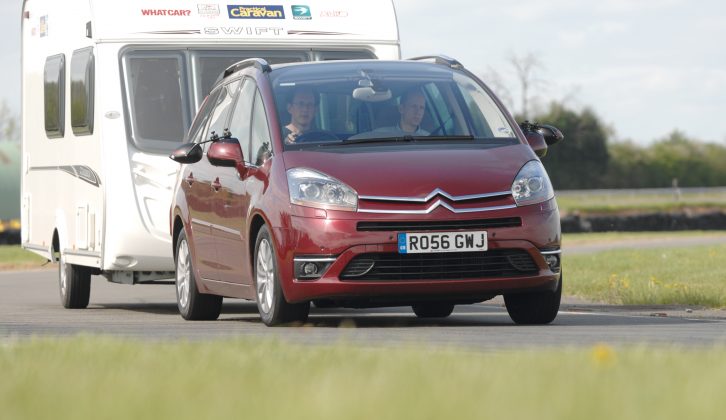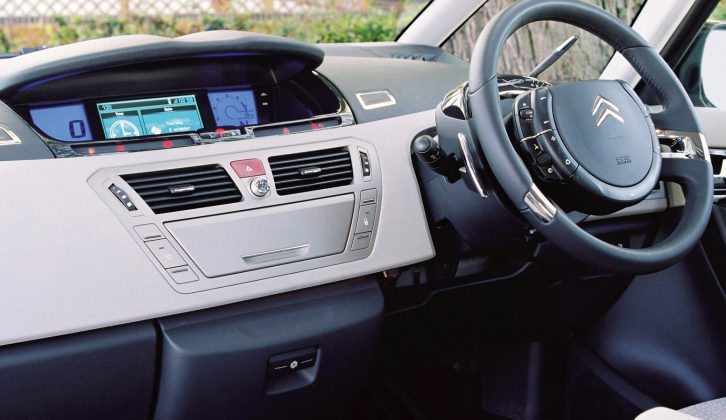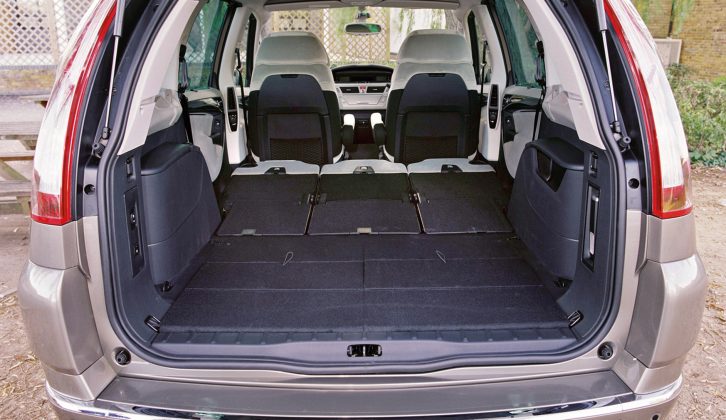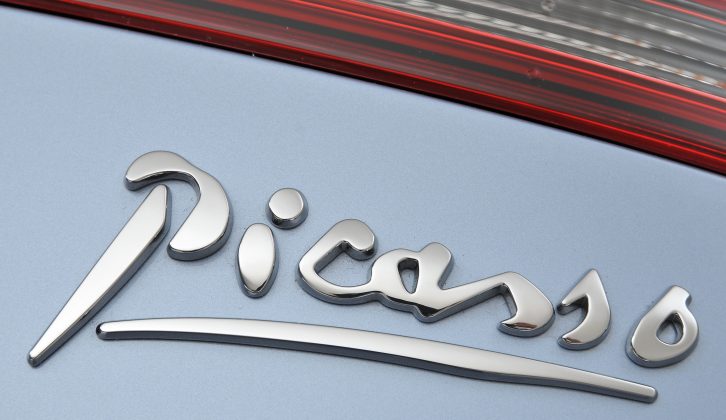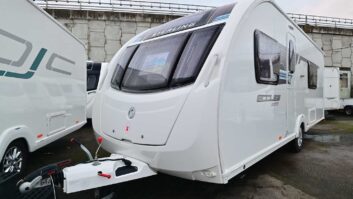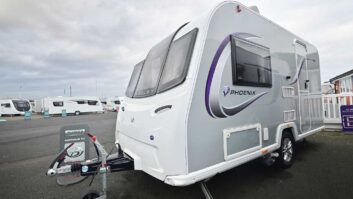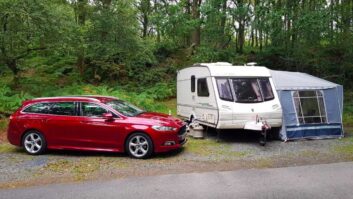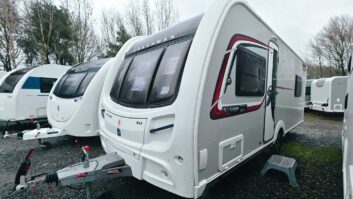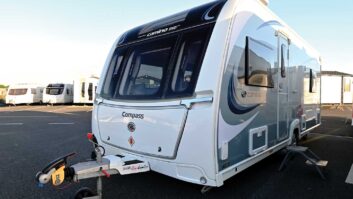This is Citroën‘s full-sized, seven-seat people carrier. Or, if you prefer, five seats and a whopping 575 litres of flat stowage space. The rear pair of seats folds into the floor in seconds, including headrests, together with the middle row when you want van-like capacity.
When new, most Citroën Grand C4 Picassos cost less than £20,000, and the vast majority of buyers were given healthy discounts by dealers. All models are well equipped and drivers love them, as much as anything for the tall windscreen, thin front pillars and large front quarter-windows that eliminate the blind spots that blight a few other large MPVs.
The handling’s good, too: not sporty like that of a Ford S-Max, but pleasantly wieldy. More importantly, the ride comfort is very good indeed – something that’s been a Citroën strength for decades.
The trouble is, French cars aren’t exactly renowned for their longevity, so how is the 2007-2013 Grand C4 Picasso faring up to nine years after it left the factory?
Model history
The Grand (there’s also the straight C4 Picasso, which is smaller and has just five seats) arrived in the UK in early 2007, with a choice of two diesel and two petrol engines. Diesels accounted for around 95% of Grand C4 Picasso sales, and those first offerings were a 1.6 HDi with 110bhp and 177lb ft of torque, and a 2.0 HDi with 138bhp and 236lb ft. Note that the 1.6 HDi has a much lower towing limit of 1180kg compared with the 1500kg of most other models in the range.
Petrol engines are a 127bhp/125lb ft 1.8i 16v and a 143bhp/147lb ft 2.0i 16v. They were joined in late 2008 by two 1.6 engines: one normally aspirated with 120bhp/120lb ft, plus a remarkably frugal turbo version (38mpg average) with 150bhp/177lb ft.
Gearboxes are five-speed manuals for the smaller engines and Citroën’s new EGS six-speed semi-automatic for the 2.0s (it was also an option on the 1.6 HDi). From the end of 2007, Citroën also offered a normal torque-converter six-speed auto on the 2.0 HDi.
The 1.8 and 2.0 petrol engines were phased out in 2009, and all remaining engines made more fuel efficient. The September 2010 facelift brought new bumpers, lights and front grille, and the diesel engines were given a bit of a boost: the 1.6 HDi had the same power but torque was bumped up to 210lb ft; the 2.0 HDi went up to 150bhp/251lb ft, with an extra 10bhp top-up for the Exclusive model.
The different trim levels are too complex to explain here, but run in the rising order LX, SX, VTR, VTR+ and Exclusive. The latter gets self-levelling rear suspension, which was optional on some other models.
Trouble spots
The main issues with the Citroën Grand C4 Picasso revolve around the EGS semi-auto gearbox, which was the only option on some models. Even when new they had a reputation for jerky and slow shifts, and you really don’t want jerkiness when towing. Remember, this is a semi-auto, so it comes with a clutch, the life of which can be short – as little as 25,000 miles in some cases – and they don’t seem to like reversing with a caravan on the back. A replacement costs £700 upwards, perhaps 50% more if the dual-mass flywheel also needs replacing. It’s also not unknown for faults to develop in the computer that controls the gearbox functions, and fixing that can cost as much as £900.
If you’re still hooked on an EGS ’box, insist on taking the car out for a 30-minute test drive to check that the gearshift quality is as good as it can be. Alternatively, seek out one with the full auto, which should be a lot less trouble in the long run.
Also check that cars with self-levelling suspension sit level when running, because the suspension spheres fail.
Take a look at the 1.6 HDi’s dipstick. It’s always worth seeing what the oil’s like anyway, but it’s plastic and you may find that the end has dropped off, in which case the sump must be dropped to retrieve it.
Finally, electrical issues often stem from damp and corrosion in the fusebox in the engine bay. Online forums are full of horror stories about these, so peer under its lid. If it already looks a bit suspect in there, you may be better looking at another example. Either way, we recommend running a bead of clear silicone sealant round where the lid fits.
Verdict
Even those who’ve had problems with their Grand C4 Picassos seem to like them enough to forgive a few French foibles. They are big, versatile, nice places to be – apart from a few cheap interior plastics – and stable for towing. The low noseweight limit is a bit of an irritation, and will call for careful loading, but with asking prices of around five grand for a good six-year-old example, there’s room for compromise.
For towing, we’d go for the Citroën Grand C4 Picasso 2.0 HDi Exclusive auto. This gets the recommended regular automatic gearbox and therefore commands a £250 premium over the EGS model. However, we’d steer clear of the 1.6 HDi EGS variant. It is only for those with smaller caravans, and its potentially troublesome semi-auto EGS gearbox means that it’s one we’d avoid.
What you need to know
We’re looking here at models built between 2007 and 2013 which, right now, will cost between £2000 and £12,500.
Let’s start at the top price, which applies to only the very newest Exclusive models. For anything else you don’t really need to stray into five-figure territory and there are plenty of good, well-historied cars around four to six years old to be had in the £5000-£6000 range.
You can pay a lot less, too, but we wouldn’t venture into bargain-basement territory because it seems to be full of problem cars, some with quite low mileages. But something like the private sale 1.8i SX we saw with a manual gearbox and 67,000 miles has to be a tempting cheapy.
Here are some useful figures (for a 2009 Citroën Grand C4 Picasso 2.0 HDi auto):
- Kerbweight 1560kg
- 85% match 1326kg
- Towing limit 1500kg
- Towball limit 70kg
We got quotes from PF Jones to find out how much it would cost to fit a towball to a Grand C4 Picasso. We were quoted £102 for a Witter flange towbar and £153.89 for a Bosal detachable towbar, fitting extra in both cases.
And in terms of servicing, an interim service on one of these would be £150.80, a full service £232, according to Servicing Stop (prices may vary depending on location).
All models are well equipped, drivers love them and ride comfort is very good indeed
